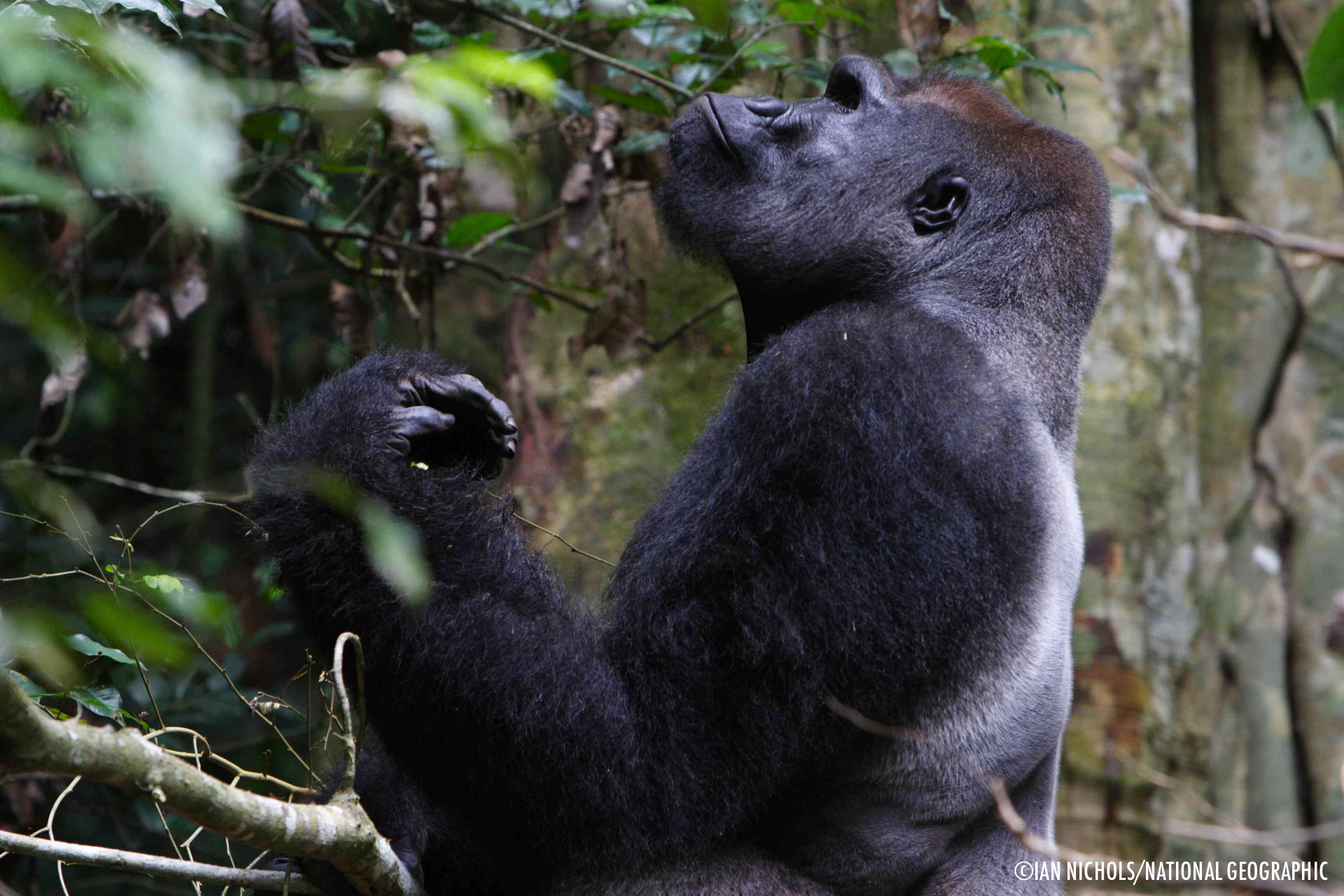
Kingo turns 40
Out of the thick forest, a loud grunt signals the presence of Kingo, a 200 kg silverback gorilla, sitting on the forest floor calling to his group. Kingo Ya Bole, which means “The Loud Voice”, calls constantly to his group, but when agitated he inflates his chest and builds up a hooting crescendo delivered with a chest beat which can travel for hundreds of meters. First identified in 1999, Kingo was chosen to be habituated by researchers interested in learning more about the behavior and ecology of Western Lowland Gorillas (Gorilla gorilla gorilla).
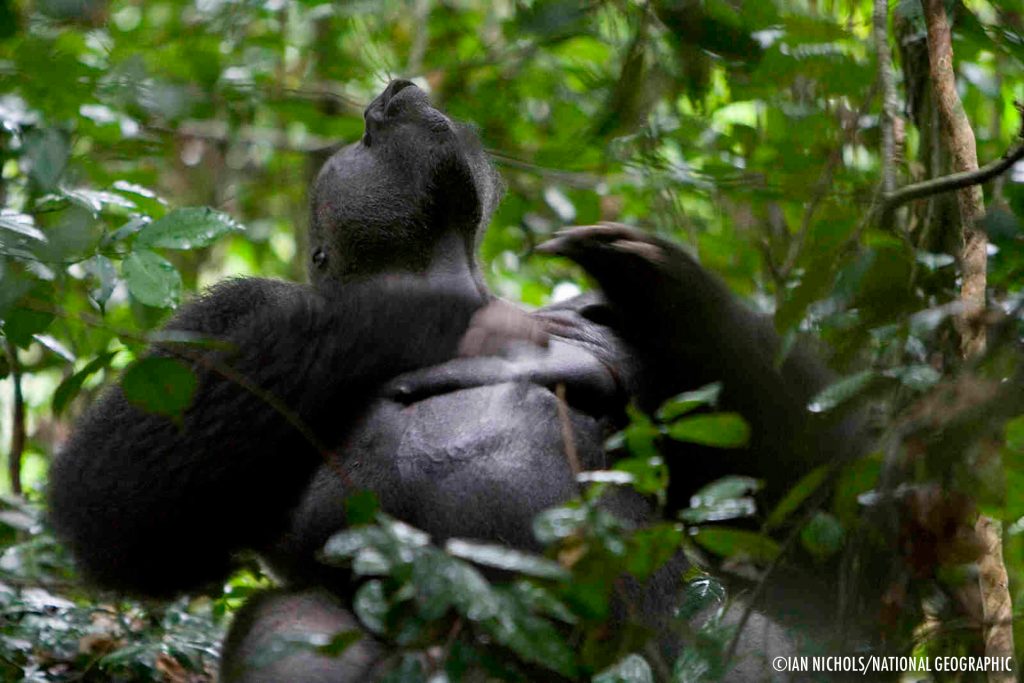
Male gorillas start to become adults around the age of 16 years old, developing grey hair on their backs as they mature, which is why a fully adult gorilla is called a ‘silverback’. Around the age of 18 they leave their birth group and range alone for some years seeking females to create a breeding group. When Kingo was first reliably followed (by April 2001) he was already an adult silverback estimated to be over 20 years old, with 6 adult females, 1 juvenile female, and 2 infants.
”This year, we estimate Kingo to be around 40 years old, which is about the maximum estimated lifespan of a wild lowland gorilla, and yet Kingo still looks as strong as ever.
Over the last 17 years we have had the privilege to witness the daily life of Kingo and his family. We have observed him as a fierce defender of his females, sustaining wounds in a fight with another silverback, and also as a tender, attentive father, babysitting his infants while their mothers feed out of sight, and never leaving the side of his infant son Aimé when he was gravely injured from a tree fall. Kingo is a calm silverback, who sits down and caresses his right hand with his left thumb while looking into the distance. He hums when feeding, either to express his satisfaction, or warn the rest of the family to keep away from ‘his’ food. He naps frequently, often sticking his feet in the air and holding them with his hands. While looking after the young ones, he often stops the older ones when they play too roughly with the infants. He follows his females reluctantly into the swamps and washes the plants before feeding on them, the young ones imitating him.
Kingo has had 10 females during the 17 years that we have known him, nine of whom have produced infants. Only one, Mekome, has stayed with him throughout her life. In 2011 during an interaction with our 2nd habituated group (Buka’s group), Kingo abducted one of Buka’s daughters, a young female called Mokombe, who now is one of the 2 adult females in his group, mother of his infant Aimé. In the last two years, four females have left him, leaving their weaned infants behind for Kingo to protect. Now only old Mekome and younger Mokombe, both with young infants, are still with Kingo. Unfortunately Mekomé’s infant Stevi was injured in a treefall this year and died two days later. At that time, as well as when his juvenile sons Ike and Itephie were injured by leopard attacks and the infant Aimé was injured by a treefall, Kingo stayed with them, watching their wounds, walking with them, resting next to them, and chasing away curious group members from the injured infants.
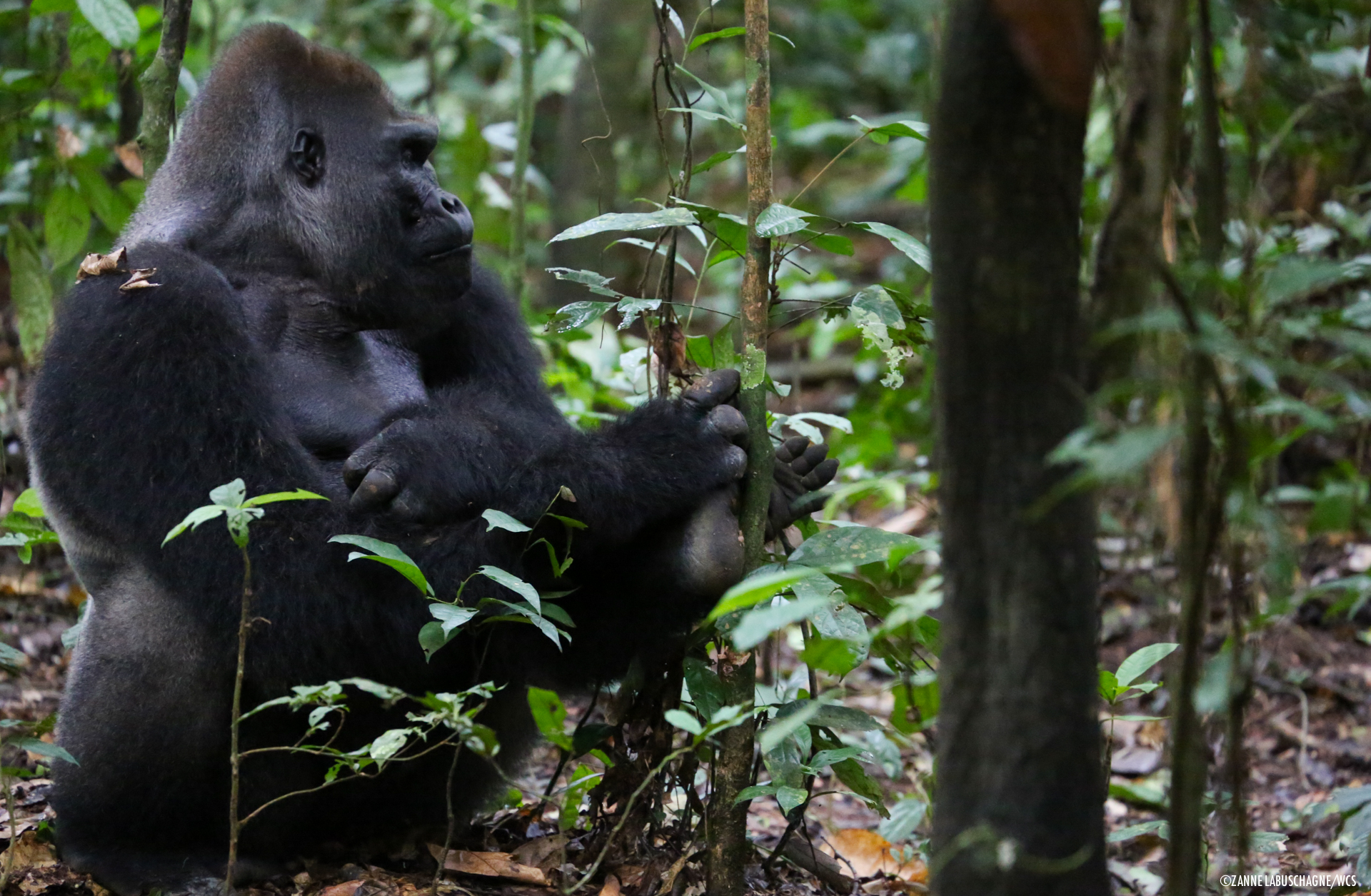
Although life can seem idyllic for a gorilla; feeding, napping, and playing most of the day, it also has many dangers that keep them vigilant. Infant mortality amongst lowland gorillas is high, thought to be as high as 65% for infants under 4 years old. Leopard attacks, disease, falling from trees, infections, aggressive attacks from other silverbacks, and falling branches or even large fruit are constant risks for all gorillas, but especially the young. In his lifetime Kingo has fathered 20 infants, but tragically 13 have died, most under the age of 3 years. Only one of his daughters has so far survived to emigrate to a new group. The rest of his remaining 6 offspring are still with him. Three of them are already subadults of 8-12 years old and will hopefully grow up and leave to start their own families. His 8 year-old daughter Kenga is already getting the attention of other silverbacks.
Kingo in 2002 (left) and today (right).
Kingo can be seen just as a wild animal, a great ape, a species fighting extinction, one amongst thousands. But to the Mondika researchers and trackers who spend their years with him, Kingo is family. We laugh when they play, we cry over their deaths, we hold our breath when one is injured, and we fight to protect them.
On the occasion of his (estimated) 40th birthday, we wish Kingo many more years of life in good health and more offspring growing up under his watchful eye. It is a privilege and a pleasure to share his life with him.
Happy 40th Birthday dear Kingo!


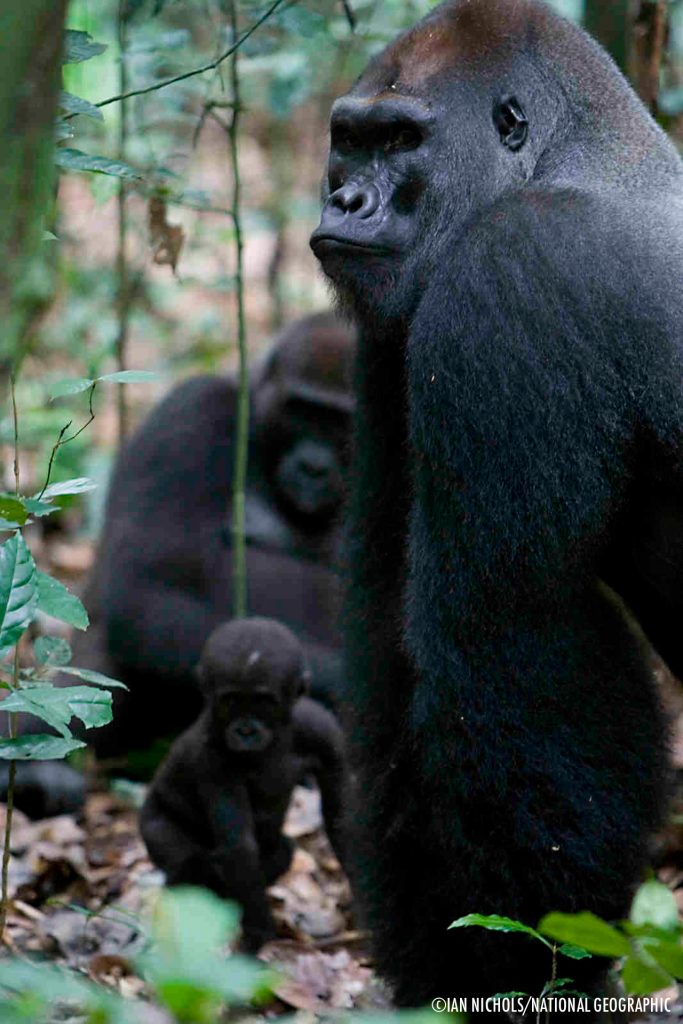
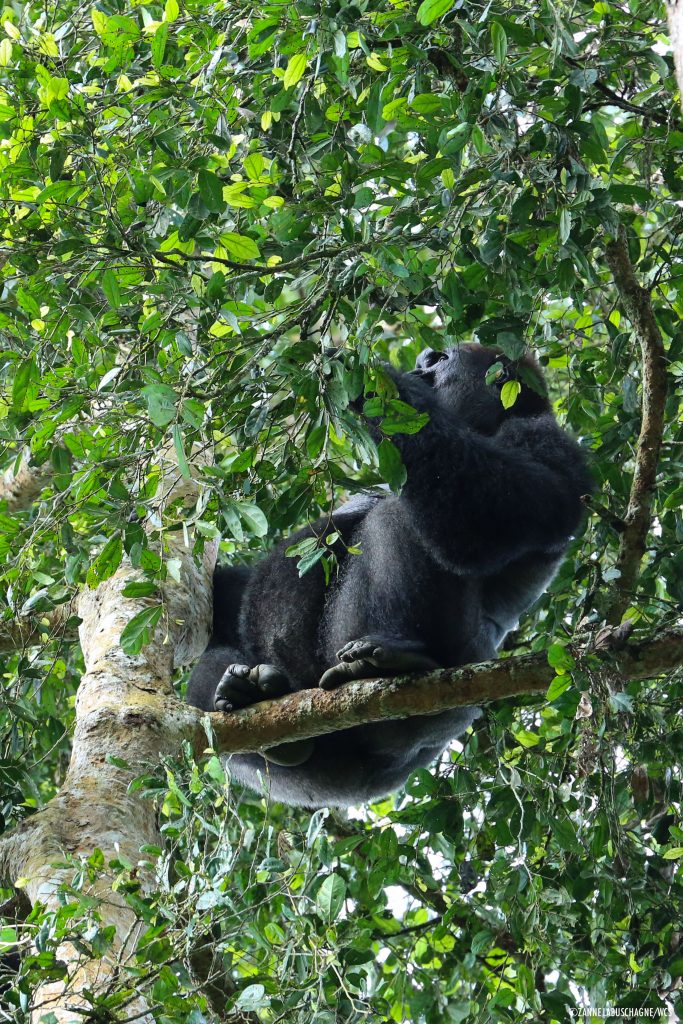
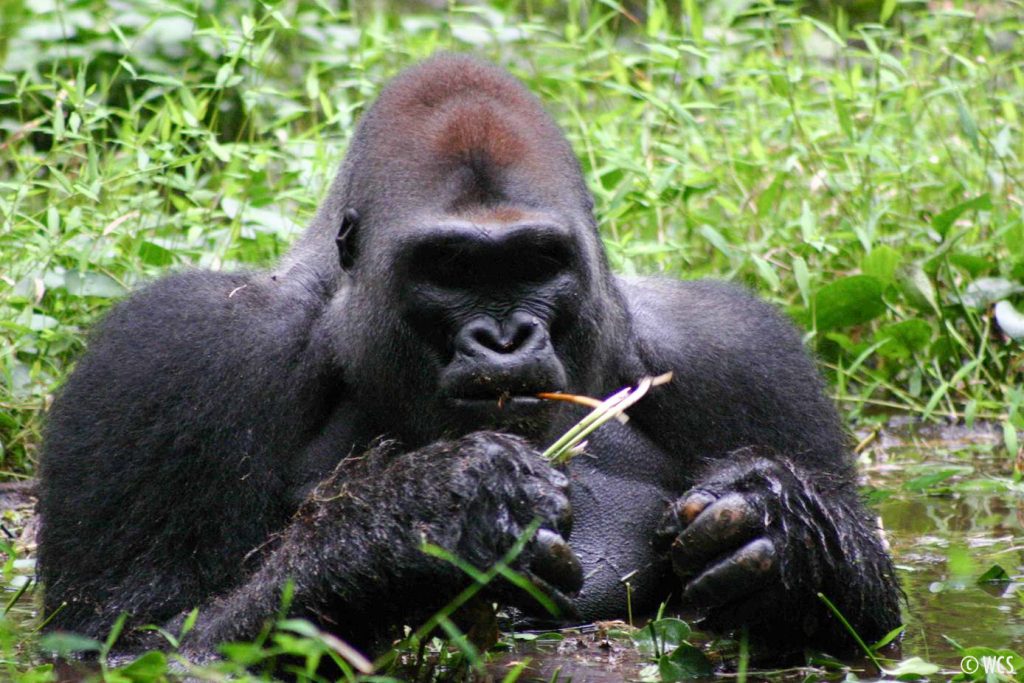
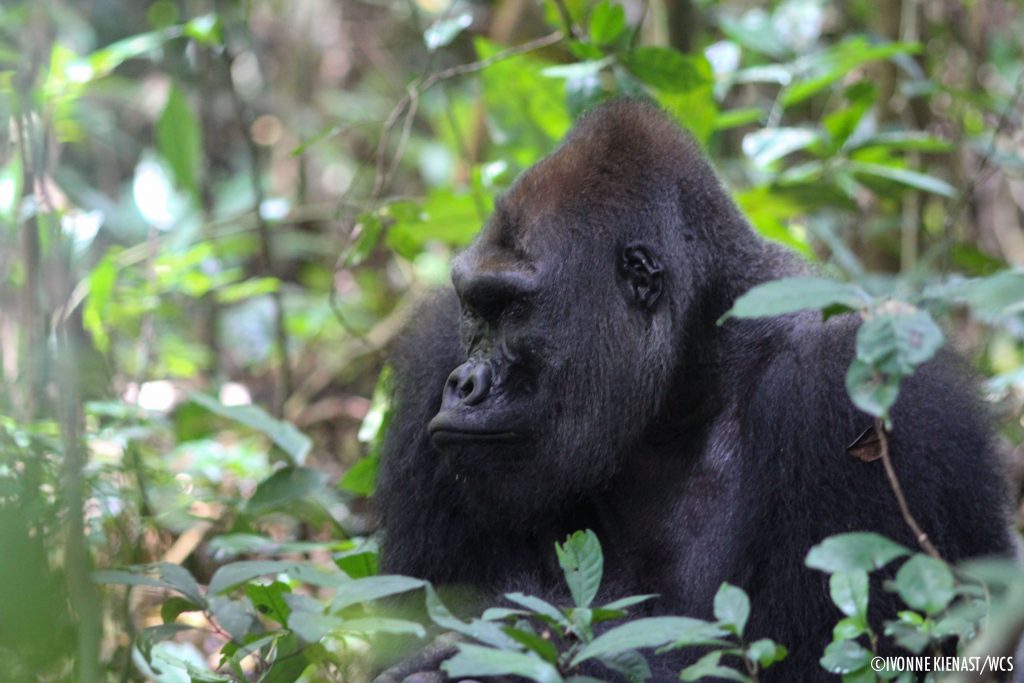
Phred Newbury
Top man Gaston. People around the world appreciate what you do to help Kingo and all our gorilla friends.
Stu Nixon
wonderful story…I was lucky enough to be part of the team that identified Kingo way back in 2000…his gravelly deep snarly bark was the give away. Although I only got to actually see him on a few occasions all those moments with him were so special. His character was already as discernible from the other silverbacks in the area, calmer and steadier. Nearly 20 years on the forest of Mondika are the most pristine Ihave ever been fortunate enough to work in. This story has made me very happy
long live Kingo ya Bule, master of Mondika.
GudrunSmall
I have checked your blog and i’ve found some duplicate content, that’s why you don’t rank high in google’s search results, but there is a tool that can help
you to create 100% unique content, search for; Boorfe’s
tips unlimited content
MMyles
Hello, is anybody here interested in online working?
It is simple survey filling. Even 10 bucks per survey
(10 minutes duration). If you are interested, send
me email to hansorloski[at]gmail.com
Pingback: Meet Kingo: Wild silverback gorilla, doting father of 20 | Science News
DIANE M KASTEL
I AM VERY CURIOUS AS TO HOW INFANT GORILLAS CAN DIE FROM “LARGE FRUIT”? IS IT BECAUSE THE FRUIT FALLS O TOP OF THE BABY?
DINE M. KASTEL
UNITED STATES
Zanne Labuschagne
Hi Diane, yes you are correct. Sometimes freak accidents like these happen when the gorillas are feeding under a fruiting tree. Some of the fruits in the forest are very large and when falling from 30 to 40 metres in the canopy down to the forest floor the impact can be fatal.
Pingback: WCS Congo 2018 highlights – WCS Congo blog